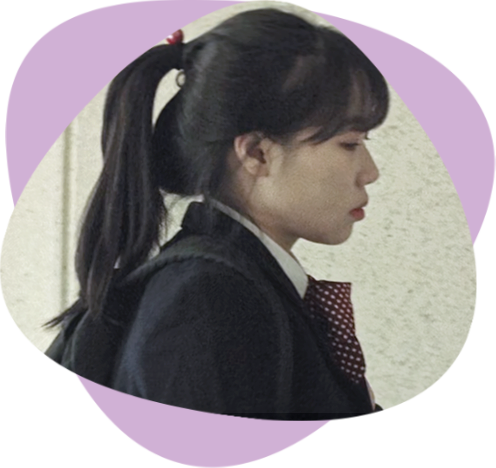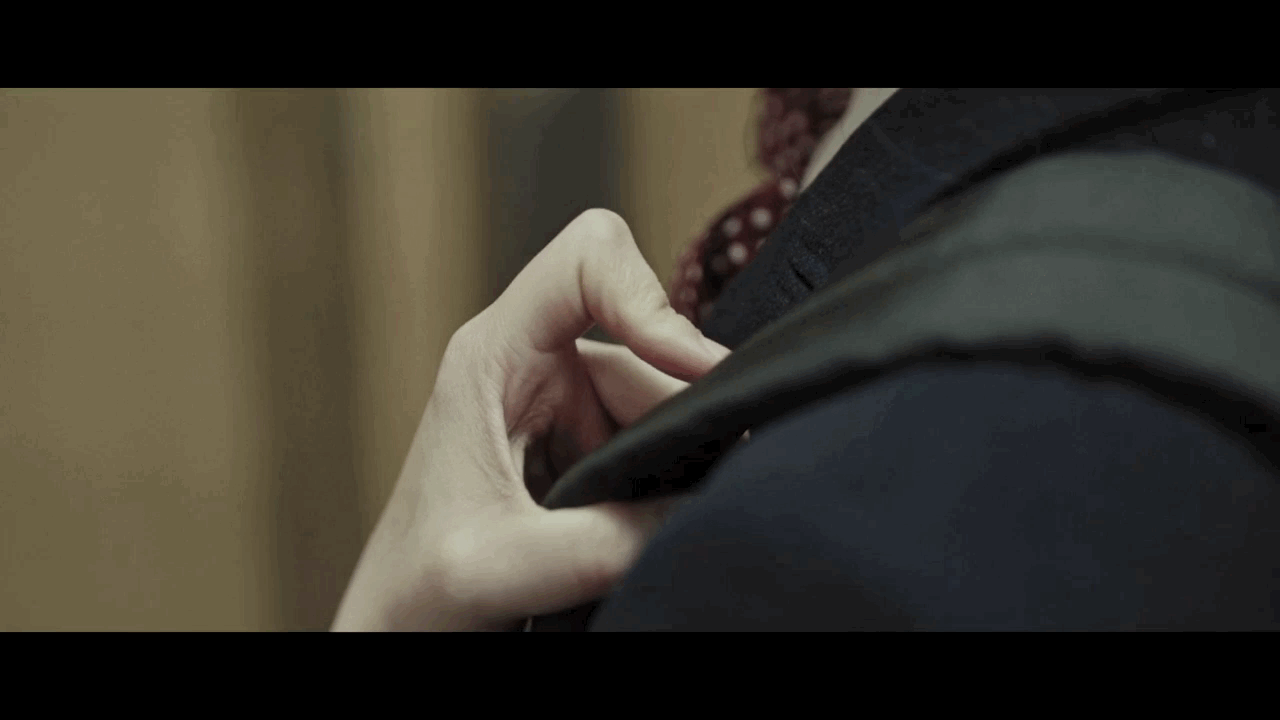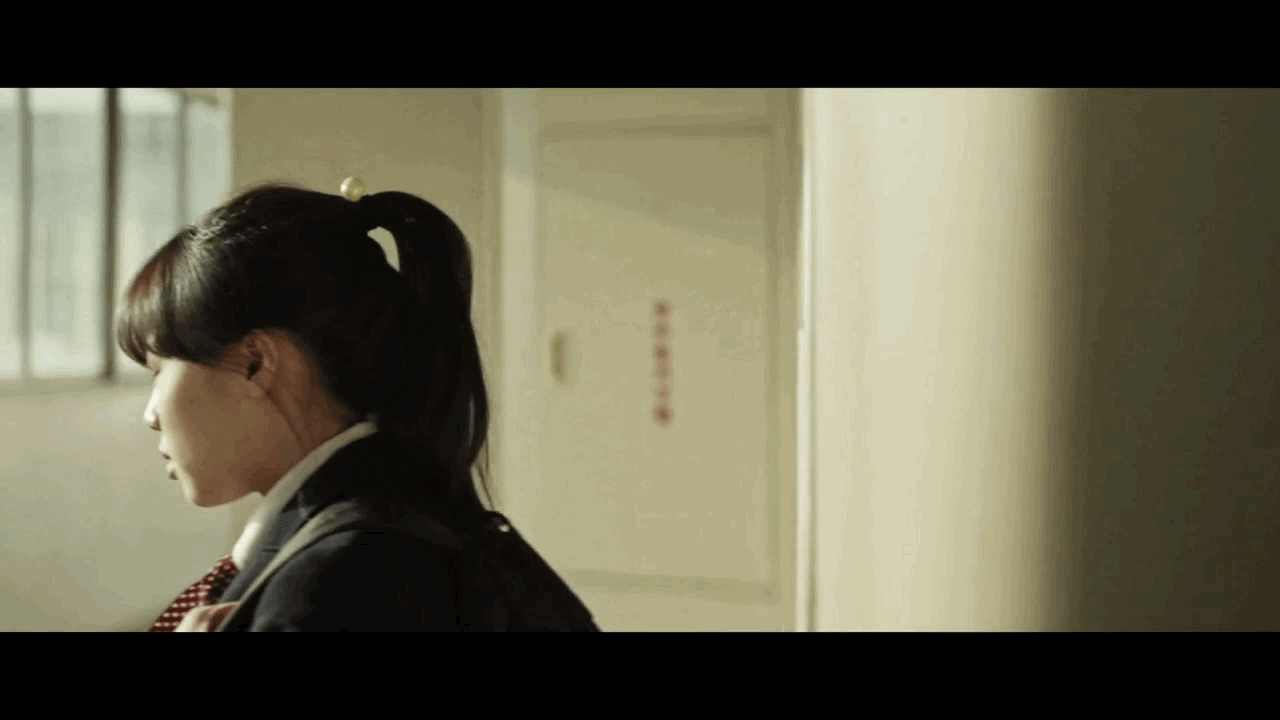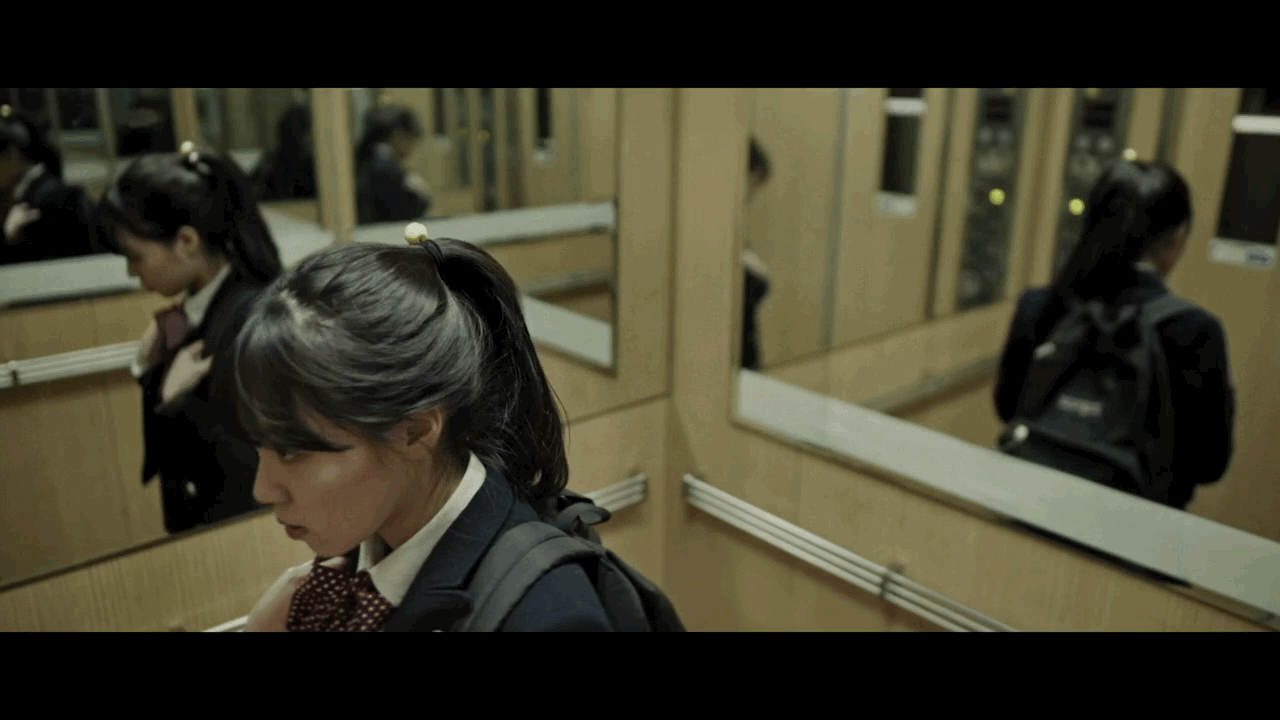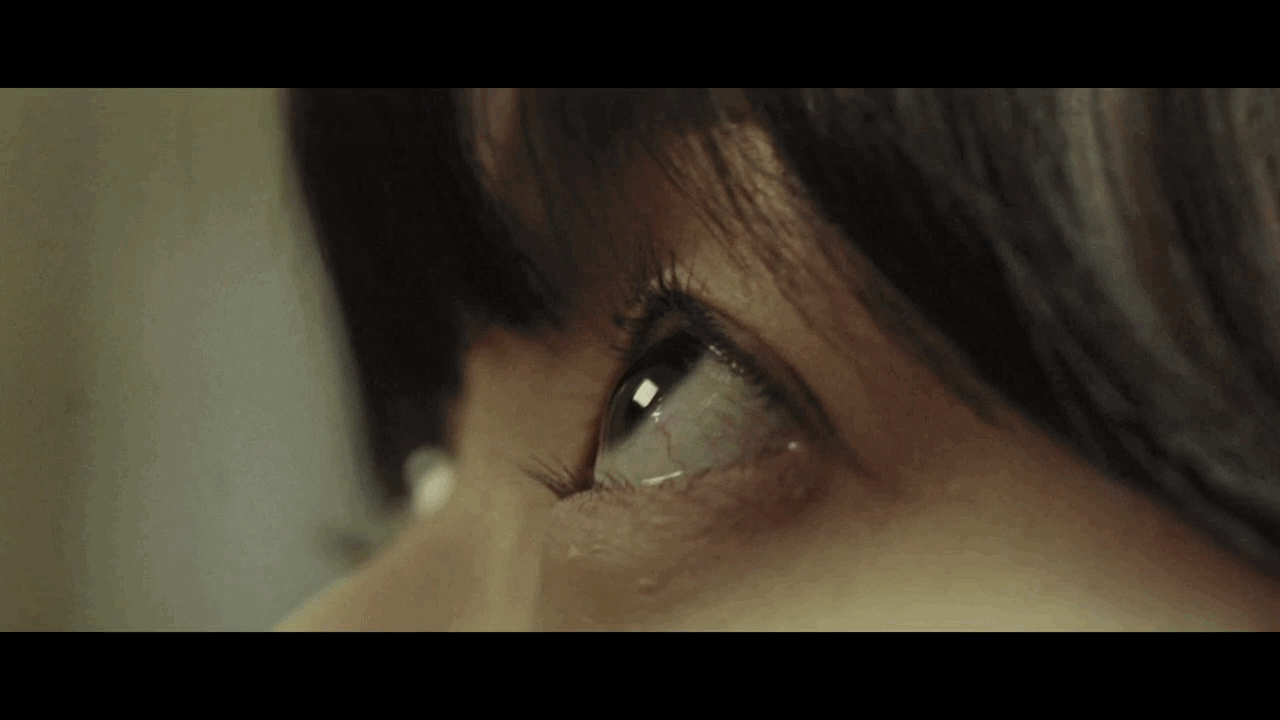Instructions
Click on the thumbnails to better understand some of the filmic means of 'Edge of Seventeen'.
The setting
Full shots establish the setting and features the protagonist on her way in and out of the elevator, but otherwise we see her only in close-up or medium shots, which heighten the pressure she’s enduring.
Close framing
The close framing is accompanied by a whispering voice that pushes its way into the soundscape and encourages us to look at the main character: ”Look at her”. In other words, we’re forced to view (spy on) her frightened face from the front, the back and in profile.
Suspense
We study both her ear and her cheek up close, as well as her hand gripping the shoulder strap of her backpack and the ponytail with the eye-catching elastic.
Props
The school uniform, the red and white dotted bow around her neck and the elastic in her hair (red = sexuality and danger, and white = innocence) are significant props.
Together with the claustrophobic location, the elevator, they sharpen the thematics around the tightly controlled teenager who, as a young girl, has to conform to the strict Korean system – also manifested in the colors red, white, blue and black – the colors of the Korean flag.
Pay-off
The close-up of the hair elastic functions as a set-up for the moment when the invisible force pulls the elastic out of her hair in slow motion, as a pay-off for the whole tense situation.
Ultra-close-up
Right after her mirror image turns towards her, the close framing culminates in an effective ultra-close-up (see the next frame) of the girl’s wide open and terror filled eye.
Classic motif
The eye is a classic motif in thrillers, and works to create fear and emotions, but also to focus on the character’s inner world.
